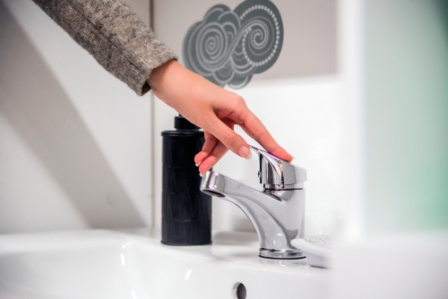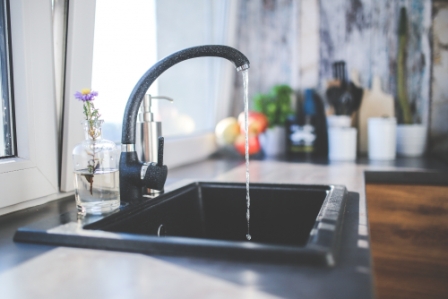Looking for how to save water? We tell you the best measures to reduce water consumption in your home, both in the bathroom, in the kitchen, or in the garden.
Tips for saving water

We show you different ways to save water depending on the area of the house in which you want to save. Most of these recommendations avoid having to buy anything, so you can start saving now:
Ways to save water in the bathroom
One of the places in the house where you can save more water is in the bathroom, due to the presence of faucets, showers, toilet:
- Stop using the toilet as an ashtray or trash. Each time you pull the cistern, they spend between 5 and 20 liters of water regardless of their use.
- Put a bottle of water filled with heavy material such as sand or small stones into the cistern. This saves about 2 liters for each time you pull the tank. These savings will correspond to the volume of material that gets inside the cistern.
- Showering instead of bathing saves more than 100 liters
- Every minute in the shower between 10 and 15 liters of water is spent, hence the importance of having the faucet closed while it is swarming
- Use dual-button WC correctly
- While brushing your teeth or shaving, keep your faucet closed
- Fixing leaks, a broken toilet spends 200,000 liters a year
- A tip for young children is to put an hourglass next to the faucet so they know how long they have to be brushing their teeth
- Use bathtub reducers, so you don’t have to fill it whole while bathing children.
How to save water in the kitchen

In the kitchen, between appliances and faucets, there is a lot of savings potential, and it is not always maximized:
- Do not have the water running while lathering dishes.
- Use, if you have, a dishwasher with the water-saving program
- Avoid thawing food in the sink, using a container
- Always use the dishwasher full, and use it whenever possible as an alternative to manual washing
- Having responsible water consumption, not wasting when cleaning or cooking.
Saving water in the garden
The gardens and swimming pools are two of the areas of the house where there is the most water consumption:
- Water first or last minute, to prevent water from evaporating, which happens if you water in the central hours of the day.
- It uses an automatic drip irrigation system, which saves against traditional.
- If the pool is not going to use it, cover it to prevent water from evaporating, especially when it is .boiling
Everyone can use these ideas at home to save water, even children, so it’s essential to teach them whenever you can.
Benefits of saving water: Economic and environmental
Saving water has many economic and environmental benefits:
The economic advantages that can be enjoyed are very great, and it always comes in well at the end of the month.
- Economic savings
- Every m3 of water in Spain is paid between 0.83 and 2.92
- The difference between showering and bathing can be more than 120 euros per year
- The fee for sections makes the more water you spend, the more expensive you get the liter of water
- Bonuses such as the social rate have a limit of cubic meters per day, from which the normal fee is paid
As for the environmental benefits that are obtained using these ways of saving water, they are as follows:
- Environmental impact
- Spain has a water shortage that is reflected in certain regions with restrictions on consumption in summer times.
- Lack of water destroys many ecosystems, leading to the death of animals and plants.
- Without water, you can’t produce the food we eat in our day-to-day life
All of this can allow you to save on both your water bill and leaving a better planet are all advantages.
Water-saving items in your home
One of the keys to saving water, beyond the tips to solve in your day-to-day, uses different elements or water flow management devices.
- Water recirculation systems: When you open the shower faucet, you usually waste some time until it heats up. In this period, between 6 and 35 liters of water are lost. To solve this problem, you can install a water return system consisting of a drive pump, a trigger, and a bypass.
- Energy-efficient tanks: New tanks, despite being just as efficient as old ones, spend 4 to 5 times less water. These can be purchased from platforms like Amazon.
- Using fertilizers: Also called water aerators, they are responsible for mixing water with air, allowing savings of up to 60% of water consumption, being able to be installed in bidets, sinks, batteries,… They can be purchased from different online portals and stores and are very easily installable.
How governments help save water: Their methods of saving water
Through different laws and decrees, different municipal and regional governments promote more responsible water consumption.
- Implementation of supply tranches on invoices: This measure causes the more water you spend, the more expensive the liter of water will come out. In this way, it attempts to find that the population consumes as little water as possible.
- Updating the water meter network: One of the big problems in the different water networks is leak losses. Through the renewal of the different water meters, leaks can be detected more accurately.
Frequently Asked Questions About Water Savings
Is spending less water the only way to save on the bill?
Although not as well known as the social bonus of light, most town halls have different social rates that allow you to save on the water bill if you meet certain conditions. These may be vulnerable or live more than a certain number of people within an address.
How do I know if I spend a lot of water?
There’s no exact figure that lets you know if you’re spending a lot or little water. As an indication, it is recommended that you always be within the first stretch of consumption indicated by your supplying company on the invoice.
Also Read:


